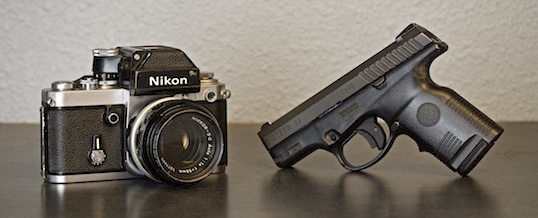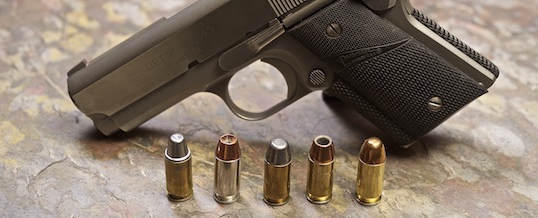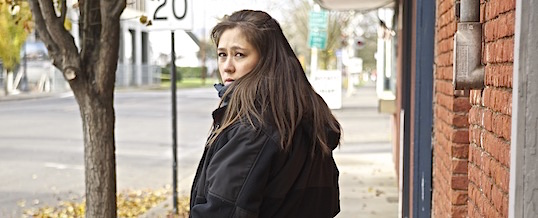
The problem with defensive shooting is that it’s dominated by enthusiasts. That’s not necessarily good for you.
I have a confession to make: I once screwed up a lot of people who came to me for advice. Wait, it’s not what you think! It does, however, directly apply to what I do today, and probably why you’re reading this blog. Allow me to relate my short story.
Back in my much-younger days I ran a chain of camera stores and taught photography classes. It was the early 1980s and photography was the fad of the day, spurred mainly by the introduction of “automatic” cameras, a healthy consumer environment, and economies of scale. Suddenly anyone could afford a “good” camera and take better pictures; it was, in fact, what most people wanted to do with their camera.
I, on the other hand, was a serious photographic hobbyist. “Serious” to the point that I compounded my own film developing chemistry from scratch (ask me about the benefits of persulfate-quinone over ferric ammonium EDTA. Esoteric? Yeah, but that’s how deep I was into the hobby.) Everyone I knew and I worked with was the same way, if not to the ridiculously geeky degree that I was.
Doing it for the wrong reasons
We all had one thing in common, however; we assumed anyone who wanted to buy a camera from a camera store wanted to be just like us, serious hobbyists and enthusiasts. In reality most people just wanted to be sure their sunset, baby and seagull pictures (the three most common subjects that came through the photofinishing department) wouldn’t suck. They didn’t want to know the arcane aspects of photography; they just wanted nice pictures to show their friends. What most people needed was an automatic camera that set shutter speed and aperture for them; they didn’t really need nor want to fiddle with dials and f-stops and all of the stuff which we lived by.
That didn’t stop us, however, from trying to impose our will on them. We insisted on selling everyone who walked through the door a manual camera, devoid of any automation, because that’s what “real” photographers used. We didn’t manage to snag everyone in our trap, of course, but quite a few of them fell under our spell. Many of those people would significantly lower their picture-taking activity or even give up photography altogether after a while, simply because we’d made it harder for them to get what they wanted in the first place.
What does this have to do with the world of self defense training? The problem with defensive shooting is the same problem we had in our camera stores: it’s run by rabid hobbyists, enthusiasts who are so deep into the shooting and hardware aspects they’ve completely lost sight of the reason for you being there.
What’s wrong with being a shooting enthusiast?
Let’s face it: most people get into the training business because they’re gun enthusiasts. They buy more and more hardware, take loads of classes from the latest names in the training world, perhaps develop a heavy ego investment in competition, and then go into the educational part of it because they either a) need to find a way to offset the money they’re spending on their hobby, or b) like my camera store days, are convinced their knowledge is so superior they initiate a crusade to convert others to their particular way of thinking.
Not that being an enthusiast is necessarily a bad thing, you understand; enthusiasts drive innovation and bring new products and ideas into the marketplace. The problem is when enthusiasts don’t recognize the environment in which they spend time isn’t the same as the one in which non-enthusiasts spend time. As a result they tend to think what’s appropriate for them is appropriate for everyone.
If you look around the defensive shooting world you’ll see this enthusiast/hobbyist attitude all over. From the gear being hawked to the classes being taught, much of it bears no resemblance to the gear and the training the real person, the non-enthusiast who just wants to protect themselves, needs.
I’m guilty of this myself (probably a throwback to my photographic industry experience.) When I started in this business nearly a quarter-century ago I, too, was an enthusiast; I preached competition and impractical-for-the-average-person carry gear and insane “tactical” training. I taught a lot of stuff appropriate for enthusiasts, but was completely wrong for everyone else. As I’ve said many times, this is what’s known as a context mismatch — and it’s how this business has historically operated, and largely still does.
Over the last decade, as I’ve aged and calmed down a bit, I’ve come to open my eyes and see the damage I did (and so many others still do) by assuming and insisting everyone become the enthusiast I was. From telling people “anyone” can carry a full-sized service pistol or revolver (because I could) to spending time chasing unreasonable levels of physical skill (instead of learning other, more important survival skills), I’ve done it all.
My point is I no longer do.
I’ve changed my ways
The last few years have taught me that sometimes learning how to not shoot is more important than reflexively drawing and pulling the trigger; that trauma care skills are far more important than shooting skills; that a small gun, consistently carried and practiced with, is a more effective defensive tool than one which isn’t carried; that breaking the mindset of the gun being the only thing which keeps me safe paradoxically keeps me safer when I can’t carry one; that practicing and mastering a few universally applicable skills is better than constantly learning a wide variety of things which will never be mastered; that being able to think and talk with a gun in hand will often end an incident without the need to shoot someone; that my being a better teacher is more important to my students than my being a better shooter; and that adding “stuff” to a firearm rarely, if ever, actually makes it a better defensive tool.
These are viewpoints shared by only a small handful of people in the defensive training world. They’re also viewpoints that are often angrily denounced by many of the enthusiasts who inhabit large swaths of that world. Our numbers, however, are growing as more people realize we need to do a better job of teaching others how to keep themselves and their families safer.
How do you tell if a prospective instructor is a gun enthusiast, rather than a professional interested in helping you deal with the threats you actually face in your day to day life? I’d start by asking these questions and following up with these.
Then look in the mirror and ask: “do I really want to be an enthusiast, or just learn how to better defend myself and my family?” They’re two different paths which don’t necessarily intersect.
Just like in the world of photography.
– Grant Cunningham
P.S: After this went to press, I discovered that Kevin Creighton had posted a parallel article that graphically illustrates what a hobby taken too far looks like. Watch, read and learn.
- Posted by Grant Cunningham
- On January 15, 2016



